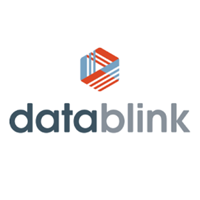Sentiment Analysis Leave a comment
The use of Latent Semantic Analysis has been prevalent in the study of human memory, especially in areas of free recall and memory search. There is a positive correlation between the semantic similarity of two words and the probability that the words would be recalled one after another in free recall tasks using study lists of random common nouns. They also noted that in these situations, the inter-response time between the similar words was much quicker than between dissimilar words. Powerful semantic-enhanced machine learning tools will deliver valuable insights that drive better decision-making and improve customer experience. It’s an https://metadialog.com/ essential sub-task of Natural Language Processing and the driving force behind machine learning tools like chatbots, search engines, and text analysis. This path of natural language processing focuses on identification of named entities such as persons, locations, organisations which are denoted by proper nouns. A comparison of word embeddings for the biomedical natural language processing. Content categorization, topic modeling, sentiment analysis, speech-to-text transcription, and text-to-speech conversion all leverage these core NLP tasks. Due to the natural variances in human speech, voice and text-based data quality vary widely.
Even English, with its relatively simple writing system based on the Roman alphabet, utilizes logographic symbols which include Arabic numerals, Currency symbols (S, £), and other special symbols. “colorless green idea.” This would be rejected by the Symantec analysis as colorless Here; green doesn’t make any sense. In this field, professionals need to keep abreast of what’s happening across their entire industry. Most information about the industry is published in press releases, news stories, and the like, and very little of this information is encoded in a highly structured way. However, most information about one’s own business will be represented in structured databases internal to each specific organization. The following are examples of some of the most common applications of NLP today. Therefore, this information needs to be extracted and mapped to a structure that Siri can process. Semantic Scholar is a free, AI-powered research tool for scientific literature, based at the Allen Institute for AI.
Discover More About Latent Semantic Indexing
Called “latent semantic indexing” because of its ability to correlate semantically related terms that are latent in a collection of text, it was first applied to text at Bellcore in the late 1980s. Machine learning also helps data analysts solve tricky problems caused by the evolution of language. For example, the phrase “sick burn” can carry many radically different meanings. Creating a sentiment analysis ruleset to account for every potential meaning is impossible. But if you feed a machine learning model with a few thousand pre-tagged examples, it can learn to understand what “sick burn” means in the context of video gaming, versus in the context of healthcare. And you can apply similar training methods to understand other double-meanings as well. Speech recognition, for example, has gotten very good and works almost flawlessly, but we still lack this kind of proficiency in natural language understanding. Your phone basically understands what you have said, but often can’t do anything with it because it doesn’t understand the meaning behind it. Also, some of the technologies out there only make you think they understand the meaning of a text. The natural language processing involves resolving different kinds of ambiguity.
- Semantic analysis is a sub topic, out of many sub topics discussed in this field.
- Concept-based searching using LSI has been applied to the eDiscovery process by leading providers as early as 2003.
- However, the computed vectors for the new text are still very relevant for similarity comparisons with all other document vectors.
- ” At the moment, the most common approach to this problem is for certain people to read thousands of articles and keep this information in their heads, or in workbooks like Excel, or, more likely, nowhere at all.
- Syntax focus about the proper ordering of words which can affect its meaning.
- As we discussed, the most important task of semantic analysis is to find the proper meaning of the sentence.
The vector representation, in this case, ends as an average of all the word’s meanings in the corpus. The underlying technology of this demo is based on a new type of Recursive Neural Network that builds on top of grammatical structures. You can also browse the Stanford Sentiment Treebank, the dataset on which this model was trained. You can help the model learn even more by labeling sentences we think would help the model or those you try in the live demo. Broadly speaking, sentiment analysis is most effective when used as a tool for Voice of Customer and Voice of Employee. Even though the writer liked their food, something about their experience turned them off. This review illustrates why an automated sentiment analysis system must consider negators and intensifiers as it assigns sentiment scores. Nouns and pronouns are most likely to represent named entities, while adjectives and adverbs usually describe those entities in emotion-laden terms. By identifying adjective-noun combinations, such as “terrible pitching” and “mediocre hitting”, a sentiment analysis system gains its first clue that it’s looking at a sentiment-bearing phrase. This is a simplified example, but it serves to illustrate the basic concepts behind rules-based sentiment analysis.
Add This Topic To Your Repo
For example, “the thief” is a noun phrase, “robbed the apartment” is a verb phrase and when put together the two phrases form a sentence, which is marked one level higher. Example of Co-reference ResolutionWhat we do in co-reference resolution is, finding which phrases refer to which entities. Here we need to find all the references to an entity within a text document. There are also words that such as ‘that’, ‘this’, ‘it’ which may or may not refer to an entity. We should identify whether they refer to an entity or not in a certain document. We can any of the below two semantic analysis techniques depending on the type of information you would like to obtain from the given data.
Concept-based searching using LSI has been applied to the eDiscovery process by leading providers as early as 2003. It can work with lists, free-form notes, email, Web-based content, etc. As long as a collection of text contains multiple terms, LSI can be used to identify patterns in the relationships between the important terms and concepts contained in the text. LSI is also an application of correspondence analysis, a multivariate statistical technique developed by Jean-Paul Benzécri in the early 1970s, to a contingency table built from word counts in documents. Find the best similarity between small groups of terms, in a semantic way (i.e. in a context of a knowledge corpus), as for example in multi choice questions MCQ answering model.
MATLAB and Python implementations of these fast algorithms are available. Unlike Gorrell and Webb’s stochastic approximation, Brand’s algorithm provides an exact solution. A cell stores the weighting of a word in a document (e.g. by tf-idf), dark cells indicate high weights. LSA groups both documents Semantic Analysis In NLP that contain similar words, as well as words that occur in a similar set of documents. It indicates, in the appropriate format, the context of a sentence or paragraph. The vocabulary used conveys the importance of the subject because of the interrelationship between linguistic classes.
Data Science: Natural Language Processing (NLP) in Python. Applications: decrypting ciphers, spam detection, sentiment analysis, article spinners, and latent semantic analysis.. https://t.co/3LkjyZy5u7 #DataScience #MachineLearning
— fafa.👩🏻💻 (@DD_FaFa_) April 16, 2022
You may have dabbled in natural language processing yourself if you ever had to diagram a sentence in school. Tagging various elements of speech, detecting which language is being spoken or written, or identifying semantic relationships between words are all core NLP tasks. Natural Language Processing, or NLP, focuses on interactions between computers and human languages. NLP is a field that brings together computer science, artificial intelligence, and linguistics. Have you ever misunderstood a sentence you’ve read and had to read it all over again? Have you ever heard a jargon term or slang phrase and had no idea what it meant? Understanding what people are saying can be difficult even for us homo sapiens. Clearly, making sense of human language is a legitimately hard problem for computers.






